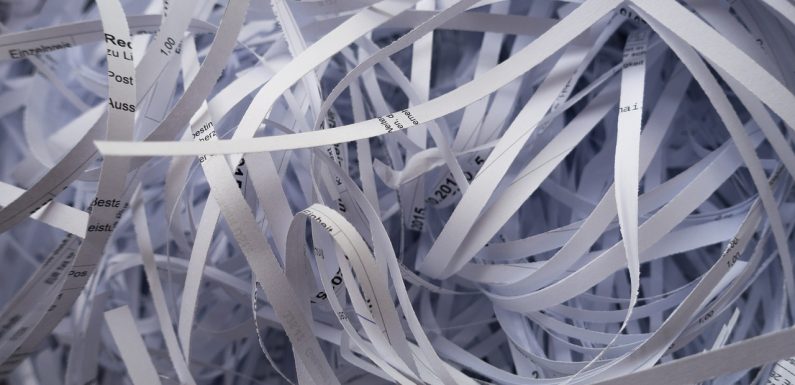
De-inking is defined as removing printing ink from recycled paper to regain paper pulp.

This process is the core of paper recycling.
Not just paper, even the ink reclaimed from recycled pulp has its own uses. It can be burnt to generate energy for paper mills, or used to make compost or gravel for roads.
Efficient recycling requires clean, recovered paper free of toxic pollutants and other contaminants – food particles, plastics, metals, etc.
A major concern – and an opportunity for innovators – in de-inking is that recycling wood pulp over and over again reduces fibre strength and, over time, renders it unfit for papermaking.
Recyclable paper may comprise of new fibres along with fibers that have already been recycled once, twice or several times over. These fibers typically could be recycled five to seven times over before they becoming unusable.
Also, de-inking or recycling using conventional methods is fraught with environmental problems.
And the process of de-inking gets more difficult when applied to remove UV-cured inks and coatings – used in digital printing and Ink Jet inks.
There are a plethora of viable options to make recycling more eco-friendly and efficient.
Eco Inks & Coatings
Paper printing mostly uses pigments containing metallic compounds such as cadmium, chromium, lead and mercury, which are harmful to human and animal health, and the environment as burning these compounds or dumping them releases fumes that may spark off health hazards.
This is because standard printing inks are based on petrochemicals and used with solvents based on the alcohol group (offset inks generally comprise 30% mineral oils). The reaction results in the formation of Volatile Organic Compounds (VOCs).
VOCs react with nitrogen oxides in the presence of sunlight to produce greenhouse gases or photochemical smog, and burn holes through the ozone layer.
Eco-ink or eco-solvent ink or green ink is a recent class of ink that has the potential to cut down our consumption of fossil fuels on a fairly large scale.
These inks use transformed vegetable oils such as linseed or soy esters instead.
Bio-inks can also be de-inked easily, and burning it does not harm the environment much.
Currently, several UV ink producers are changing much of the ingredients of these inks required to make renewable recycled paper.
Packaging & Labelling is one allied industry that makes most impact on the environment and pollution as it uses large quantities of paper and ink. To this end, it is incumbent that the threshold of the percentage of offset printing inks that migrate from the printed surface into the substrate be maintained at a bare minimum; and this is where bio-inks help.
Another popular substance similar to eco-ink is print coatings. These are basically inks without pigments. But that is a topic for another time!
